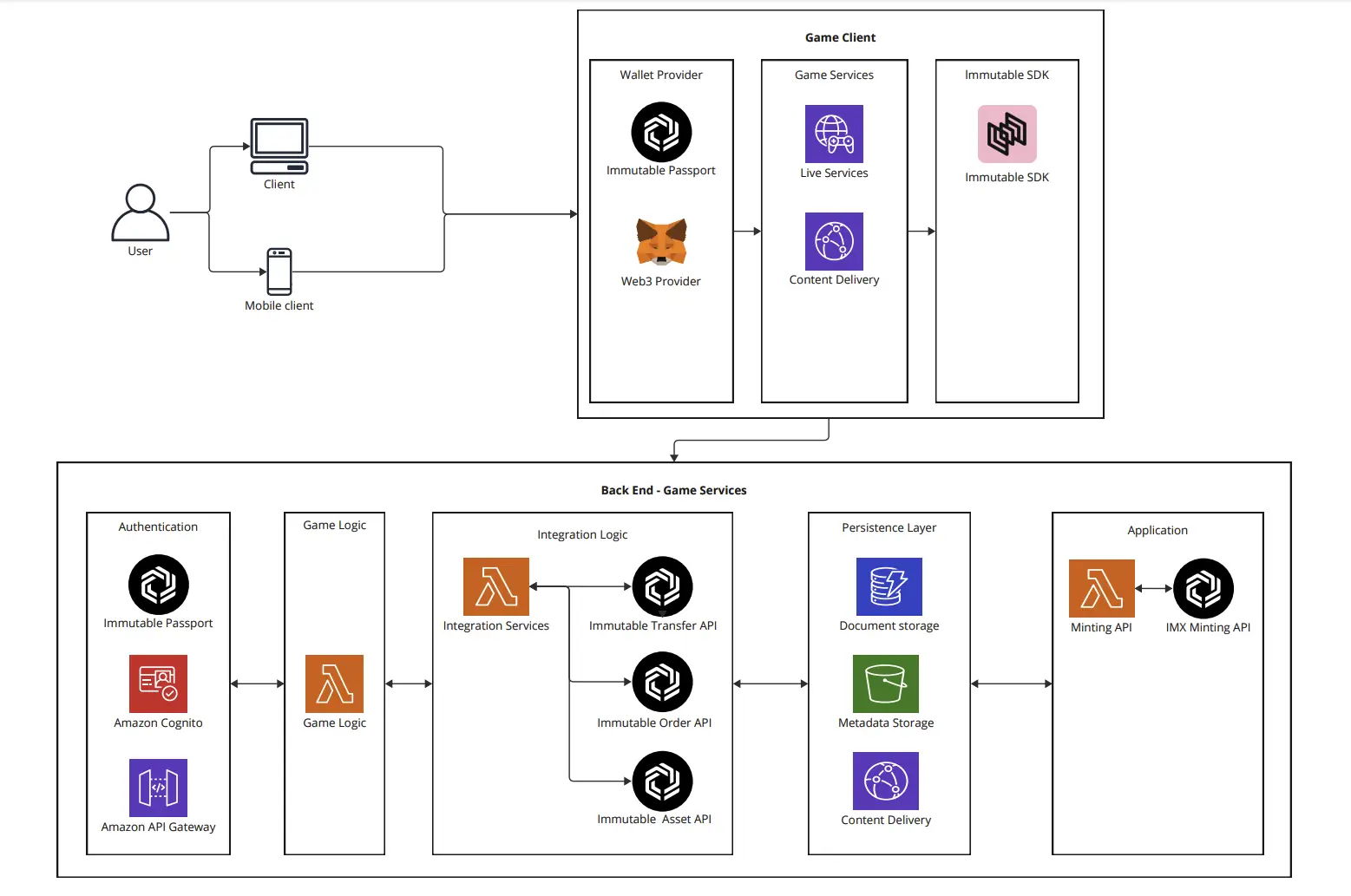Architecture for a web3 game
- An introduction to technical architecture for a web3 game
- Benefits of selecting the right architecture
- A summary of key architecture decisions
Introduction
This series introduces game builders to the technical architecture for a web3 game. This includes components of the web3 stack, decisions around requirements, and considerations for making those decisions. By the end of this series, you’ll understand the technical requirements needed to add digital assets to a game, and be able to select the right components for your game.

Technical architecture benefits
Technical architecture provides the foundations for building a scalable game on Immutable. It is an upfront investment that impacts cost, implementation, and scalability. Selecting the right architecture has several benefits:
- Increased adaptability to web3-specific game mechanics and economy
- Reduced cost and maintenance over time
- Greater reliability (up-time) and game performance
- Greater security benefits
How to use this section
The table below provides a summary of key architecture decisions when making a web3 game. The content is modular, however we suggest that beginners read the articles in order.
There is no one size fits all approach for making architecture decisions. Instead, this will largely be determined by the type of game you’re building, the specific mechanics in that game, and the blockchain requirements that stem from those mechanics. Instead of comparing specific options for components, our aim is to ensure that you understand the purpose of each decision, and that you can make the right decision for your game.
| Steps | Article | Summary |
|---|---|---|
| 1 | Determining your blockchain connection | Translate your game mechanics into blockchain requirements. |
| 2 | Determining your integration model | Understand the different ways you can interact with Immutable zkEVM. |
| 3 | Selecting a node provider | Connect your game to a blockchain using a node provider. |
| 4 | Efficient Metadata Design, Storage, and Retrieval | Learn about the differences between on-chain and off-chain data and which one to use for your assets. |
| 5 | Selecting an asset database provider | How and where to store your NFT metadata. |
| 6 | User authentication and wallet support | How to authenticate users upon login, and enable them to connect their wallet to your game. Also covered here is the topic of self-custody of assets. |
| 7 | Considerations for Treasury & Minter Key Management | Learn about how to select and structure your treasury wallet. Understand the differences in permissions for your internal users. Safeguard access to your L2 private keys. |